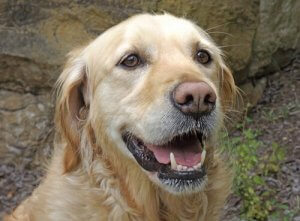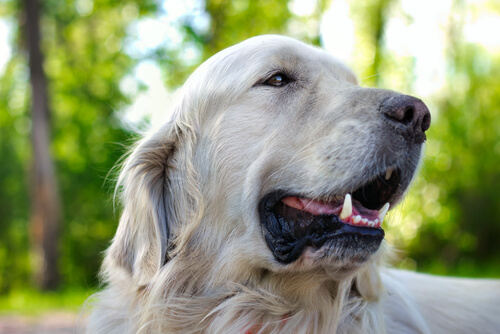Why Are a Dog's Whiskers so Important?

For most humans, a dog’s whiskers are simply there to add character to its face. But their purpose goes far beyond aesthetics – they actually play a very important role in your pet’s life. In this article, we’ll tell you all about them.
Why you shouldn’t cut off your dog’s whiskers

If you own a pet, it’s important to know as much about their physical characteristics and behavior as possible.
That way, as well as understanding them better, you’ll be able to avoid making any mistakes due to misguided fashion trends or aesthetics.
For example, many people cut off their pets’ tails, crop their ears, declaw them, and even cut off their whiskers, purely for aesthetic reasons.
So, whether you take your dog to a groomer or you are your dog’s own personal stylist, you need to understand that you should never cut their whiskers.
Whiskers and other vibrissae are an essential tool for our pets. Find out just how important they are, and you’ll quickly understand why you should never cut off your pet’s whiskers for fashion reasons
Why are a dog’s whiskers so important?
But, why are whiskers so important to our canine friends? Well, dogs actually use these hairs, which are thicker and stiffer than ordinary hairs, in a similar way to how humans use their fingertips.
While a dog’s sense of touch also depends on cutaneous receptors found all over its body, a large number of these are located at the base of their whisker follicles.
Some of their hairs are specially designed for sending sensory information to the brain. These are known as tactile sensors or vibrissae, which include hairs such as the whiskers. There are five different types of vibrissae:
- Supraorbital (above the eyes)
- Genal (on the cheeks)
- Mystacial (where a mustache would be)
- Mandibular
- Chin vibrissae
Tactile sensing hairs: an essential tool for any dog
Tactile sensory hairs are essential for providing a dog with information about its environment. But how do they work?
Whiskers grow from special hair follicles which are surrounded by sensory nerves. Any movement of the whiskers, however small, is amplified, stimulating these nerves.
As a result, when an animal’s whiskers brush against an object, its brain instantly receives information on the proximity and shape of that object.
Whiskers and tactile sensory hairs: further information
So, whiskers are designed to complement a dog’s sense of sight. They are especially important when the animal has trouble seeing, or when there isn’t enough light.
They allow them to measure the size of the space they’re in, and determine whether they are in a narrow space where they won’t need to use their eyes. Whiskers also help them to protect their eyes. If the supraorbital vibrissae brush against something, the animal will automatically close its eyes to prevent anything from hurting it.
And while there are no rules as to how many whiskers a dog should have – the size and number depend on breed and genetics – our four-legged friends rely on them. They allow them to move around in the dark without bumping into things like we do, and even sense danger.
Remember: never cut your pet’s whiskers

By this stage, you should no longer be in any doubt as to the importance of a dog’s whiskers. They play an essential role in allowing it to find its way around and understand its surroundings.
So, now you know why you should never, ever, cut your dog’s whiskers. Remember this. And don’t be tempted to reach for the scissors, even if your pet looks “messy” by your human standards. You need to learn to appreciate your dog’s natural beauty, whiskers and all.
If you think about it, most mammals with whiskers use them as tactile sensors. For another great example, you need look no further than our feline friends, for whom whiskers are equally important. Just because humans don’t have them, doesn’t mean we can’t appreciate them, and understand how important they are for animals that do.
For most humans, a dog’s whiskers are simply there to add character to its face. But their purpose goes far beyond aesthetics – they actually play a very important role in your pet’s life. In this article, we’ll tell you all about them.
Why you shouldn’t cut off your dog’s whiskers

If you own a pet, it’s important to know as much about their physical characteristics and behavior as possible.
That way, as well as understanding them better, you’ll be able to avoid making any mistakes due to misguided fashion trends or aesthetics.
For example, many people cut off their pets’ tails, crop their ears, declaw them, and even cut off their whiskers, purely for aesthetic reasons.
So, whether you take your dog to a groomer or you are your dog’s own personal stylist, you need to understand that you should never cut their whiskers.
Whiskers and other vibrissae are an essential tool for our pets. Find out just how important they are, and you’ll quickly understand why you should never cut off your pet’s whiskers for fashion reasons
Why are a dog’s whiskers so important?
But, why are whiskers so important to our canine friends? Well, dogs actually use these hairs, which are thicker and stiffer than ordinary hairs, in a similar way to how humans use their fingertips.
While a dog’s sense of touch also depends on cutaneous receptors found all over its body, a large number of these are located at the base of their whisker follicles.
Some of their hairs are specially designed for sending sensory information to the brain. These are known as tactile sensors or vibrissae, which include hairs such as the whiskers. There are five different types of vibrissae:
- Supraorbital (above the eyes)
- Genal (on the cheeks)
- Mystacial (where a mustache would be)
- Mandibular
- Chin vibrissae
Tactile sensing hairs: an essential tool for any dog
Tactile sensory hairs are essential for providing a dog with information about its environment. But how do they work?
Whiskers grow from special hair follicles which are surrounded by sensory nerves. Any movement of the whiskers, however small, is amplified, stimulating these nerves.
As a result, when an animal’s whiskers brush against an object, its brain instantly receives information on the proximity and shape of that object.
Whiskers and tactile sensory hairs: further information
So, whiskers are designed to complement a dog’s sense of sight. They are especially important when the animal has trouble seeing, or when there isn’t enough light.
They allow them to measure the size of the space they’re in, and determine whether they are in a narrow space where they won’t need to use their eyes. Whiskers also help them to protect their eyes. If the supraorbital vibrissae brush against something, the animal will automatically close its eyes to prevent anything from hurting it.
And while there are no rules as to how many whiskers a dog should have – the size and number depend on breed and genetics – our four-legged friends rely on them. They allow them to move around in the dark without bumping into things like we do, and even sense danger.
Remember: never cut your pet’s whiskers

By this stage, you should no longer be in any doubt as to the importance of a dog’s whiskers. They play an essential role in allowing it to find its way around and understand its surroundings.
So, now you know why you should never, ever, cut your dog’s whiskers. Remember this. And don’t be tempted to reach for the scissors, even if your pet looks “messy” by your human standards. You need to learn to appreciate your dog’s natural beauty, whiskers and all.
If you think about it, most mammals with whiskers use them as tactile sensors. For another great example, you need look no further than our feline friends, for whom whiskers are equally important. Just because humans don’t have them, doesn’t mean we can’t appreciate them, and understand how important they are for animals that do.
This text is provided for informational purposes only and does not replace consultation with a professional. If in doubt, consult your specialist.








